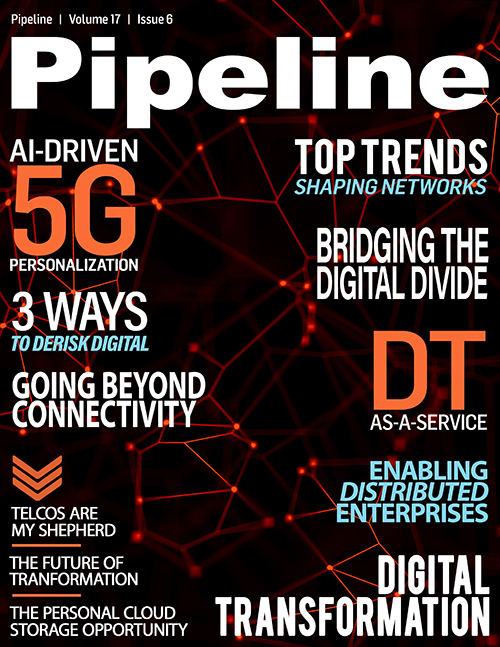The Future of Digital Transformation
By: Matthew Halligan

Digital transformation is not a new concept, but it's not static either. It is a living and evolving process, adapting to new emerging technologies that relate to the ecosystem to which it is being applied. While conversations around digital transformation increased over the last decade, its origins can be traced back to IT transformations 30 years ago, when organizations started computerizing and digitizing activities and processes. Since then, digital transformation has experienced a continual evolution. Today, telecoms are facing emerging markets and new technologies like 5G, IoT and edge computing. Meanwhile, cost pressures are also high. As a result, digital and full BSS transformations are being reimagined to align with these factors and the future.
To best support new technologies and markets, a new digital transformation approach is vital. Methodologies available now are more dynamic, agile and extensive to better enable rapidly changing markets and the unknowns of tomorrow. This reinvention requires forfeiting the traditional, full-blown digital transformation approach and legacy business models, solutions and products. The type of transformation thinking that got us to where we are is now limiting us, and the cloud is becoming the primary vehicle for transporting organizations to what’s next.
Given today’s economic conditions and technological evolution, many full digital transformation projects become obsolete before completion. Telecoms can no longer afford the duration, cost and opportunities lost as a result of tedious, cumbersome and risky full digital transformation projects. Simply put, these projects cannot keep pace with real-time advances and access to pay-as-you-go infrastructures and solutions of the cloud that offer service providers exponential growth and easier access to new business lines and markets.
Technology not for technology's sake
CSPs are learning to carefully navigate new technology, avoiding adoption for the sake of technology as they assess more appropriately the value that technology brings to their customers and business as criteria for selection. Support system transformation is about delivering a solution that provides the underlying agility to also deliver innovative consumer business models and enable competitive differentiation to the CSP. Transformation is enabled through enablement technology such as the cloud.
5G won’t wait
5G is an inflection point for the telecom market, and it’s amplifying the trajectory of cloud-scale connectivity. It provides ubiquitous coverage agnostic to the endpoint (for example, people, devices, and objects). It also provides characteristics like low latency, which enables new services such as multi-player gaming and streaming video on demand. This enables the realization of new business models, service offerings and revenue streams. 5G will trigger or enable the opportunity for telecom providers to take a bigger role in the digital ecosystem as a global “payment broker” provider for connecting people and payments in new ways, and the cloud is a co-catalyst to this opportunity.
Cloud is also impacting service velocity and cost structure. As it increases the capability to design, test and deliver services and better meet the evolving market demands, cost structures will shift from CAPEX to OPEX. To meet the need to scale or fail fast, the OPEX cost structure will afford service providers improved reaction time that is optimal in the fast-paced, rapidly changing market while reducing the financial risks.
SaaS as catalyst?
SaaS-based solutions provide an evolutionary roadmap to digital transformation compared to the traditional, full digital transformation strategies that have been adopted in the past. The SaaS model offers a more flexible, agile and less-risky approach. The strategy allows for a stepped approach to test specific use cases, KPIs and measure alignment with an organization’s future strategy while not affecting the existing core revenue-generating business. This flexibility also helps build a growing and expandible foundation for opportunities such as a partner ecosystem, edge and future unknowns.
While seemingly counterintuitive, a more gradual approach by leveraging new cloud-based technologies results in increased speed capabilities. Faster experimentation, testing, launching, time-to-value, ability to strategically address specific needs and use cases (as in specific lines of business, segments, offerings, and so on) are the benefits. Also, it’s achieved with less risk than undertaking a full digital transformation. Then, if successful, the complete ecosystem can gradually be migrated.



















